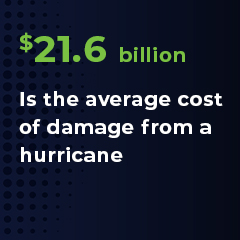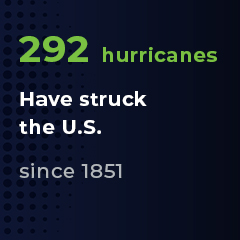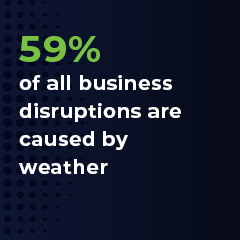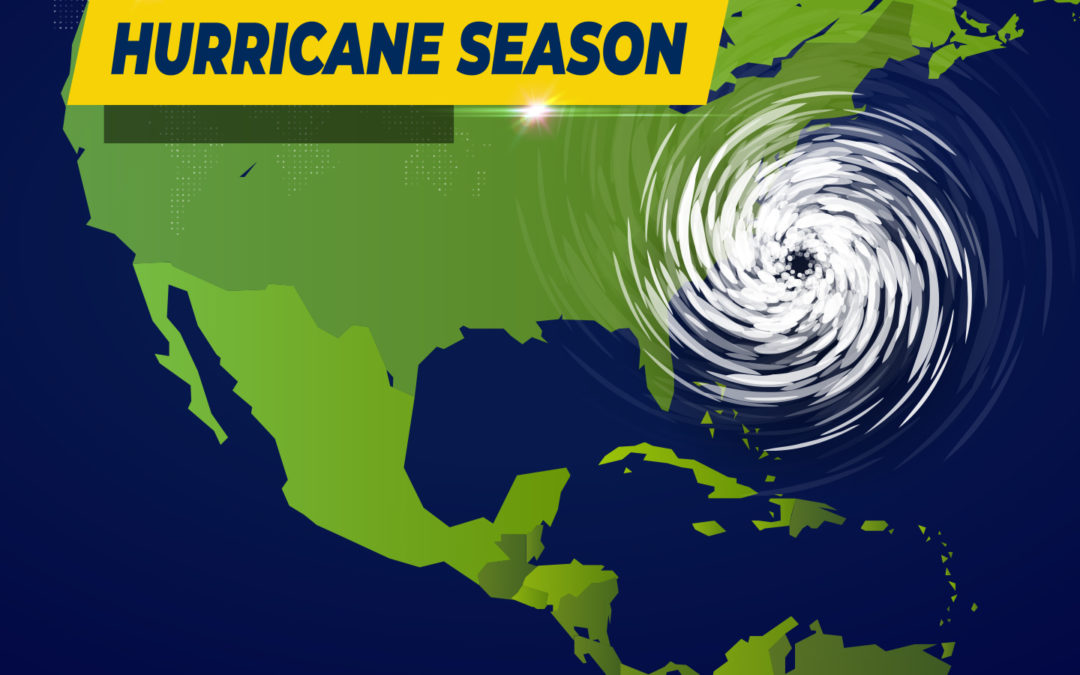Best-Practices to Prepare for What is Coming
As we continue to move through hurricane season, it is important to once again review the differences between a hurricane warning and watch. The hurricane season runs from June 1 – November 30.
NOAA defines a hurricane warning as:
Hurricane warnings indicate that hurricane conditions (sustained winds of 74 mph or higher) are expected somewhere within the specified area. Because hurricane preparedness activities become difficult once winds reach tropical storm force (sustained winds of 39 to 73 mph), the hurricane warning is issued 36 hours in advance of the anticipated onset of tropical-storm-force winds to allow for important preparation.
NOAA defines a hurricane watch as:
A hurricane watch means that hurricane conditions (sustained winds of 74 mph or higher) are possible within the specified area. A hurricane watch is issued 48 hours in advance of the anticipated onset of tropical-storm-force winds in an area.
So where are the Atlantic Hurricanes this Season?
Bryan Norcross, a hurricane specialist at Fox Weather, tells us that although hurricane season kicked off in early June, our lack of severe storms YTD has more to do with large, dry dusty air about 8,000 feet up in the atmosphere from the Sahara Dessert that thus far is covering large portions of the Atlantic Ocean. This dust storm has not yet allowed tropical storms to form. Mr. Norcross also tells us that there is the MJO effect this year; the MJO!
Yes, MJO or Madden-Julian Oscillation. The MJO is more than we care to explain in this article, but an interesting phenomenon if you care to learn more. With all that said, don’t be fooled, as NOAA is predicting an above-normal 2022 Atlantic hurricane season.
So, what are some of the Best-Practices to keep your employees and facilities safe?
Erik Aubel, Clear: Restoration and PreDisaster Consultant’s COO says, “the three most important best-practices to ensure your employees and facilities are safe is to (1) have a formalized plan, (2) communicate the plan, and (3) practice, practice, practice.
Clear has spent the better part of the last 16-years coaching commercial businesses how to mitigate risk from a pipe-break to a natural disaster.






Your Employees and Your Facilities
Mr. Aubel reminds us that there is no way to diffuse a hurricane, but we can plan to mitigate the risk to our employees and facilities. The U.S. National Hurricane Center’s research reveals that 40% of small businesses that are impacted by a weather-related event never return. Here are a few best-practice ideas Clear: Restoration and PreDisaster Consulting have coached businesses through over the years:
• Develop a plan for hurricanes and all potential business disruptions. Clear’s PreDisaster Consulting has been developing an app-based Emergency Response Plan (ERP) for the last several months. In a February 2022 survey of property managers, 62% of respondents had no idea if the buildings they were responsible for had an EMP plan and if it did, they did not know where it was. Crazy, Right?! That in this day and age, the building you own or lease doesn’t have a known ERP. Does your business? If not, we suggest you reach out to Clear PreDisaster Consulting for an initial consultation.
• Invest in technology to communicate with your employees and seek to ensure their safety. Not to sound like a commercial, but Clear’s app can be designed to have your companies ERP on their smartphones; at least what they need to know.
• Identify a safe room or safe location in the event of an emergency.
• Have a continuity plan for business sustainability.
• Protect vital records.
• Backup records and files off-site.
• Develop an emergency call list – internal and external.
• Exercise drills annually, at minimum.
• Ensure all reoccurring vendors and guests know how and where to access your ERP.
• Train all new employees.
• As a storm approaches, remind your employees to review your ERP.
• Stockpile Emergency supplies – i.e. battery powered lighting, first aid kits, and two way radios.
Beyond the structure and the plan, Mr. Aubel suggests:
• Have an emergency supply kit, first aid kit and medicine and medical supplies ready.
• Have a list of emergency contacts accessible.
• Important documents and one-of-a-kind keepsakes should have a plan.
• Have emergency food and water supply.
NOAA predicts an “above-average” hurricane season in 2022 with at least half having
a major impact. Are you prepared?
Isn’t your business worth setting up a brief 15-minute conversation with a member of the Clear team to discuss if a PreDisaster plan consultation is right for you and yours?
Source: https://www.cdc.gov/cpr/infographics/br-hurricanes.htm
Like the Clear Team on Facebook to see further updates.

